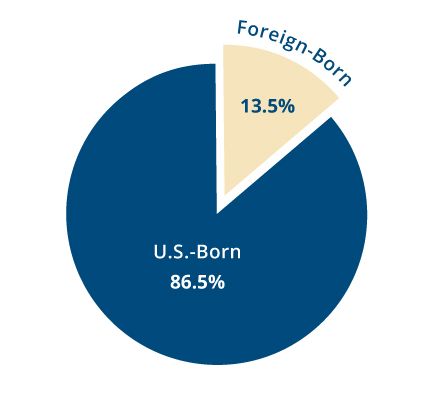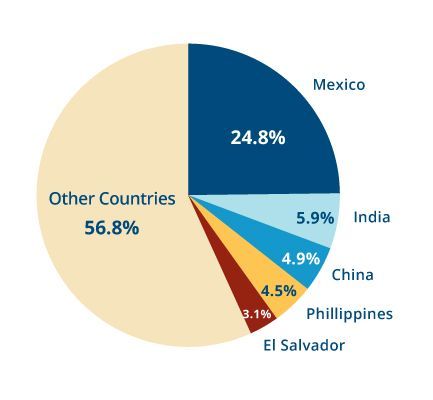Immigration Education
Immigrants in
South Dakota

How many immigrants are there in the United States, and who are they?
There are approximately 44 million immigrants in the United States.
- Learn how growing immigrant populations affect crime rates.
- Learn how diversity strengthens the U.S. economy.
- Learn how immigrant populations are distributed state by state.
- Learn about trends in countries of origins of new immigrants.
What is the migration status of immigrants in the United States?
The majority of U.S. immigrants (77%) have authorization.
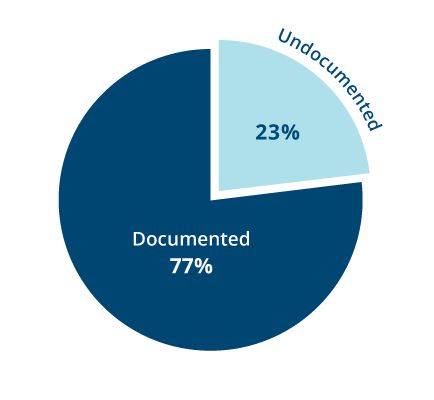
Source: Pew Research Center estimates based on augmented 2017 U.S. Census Bureau data
More than half (50.9%) of all immigrants have become United States citizens.
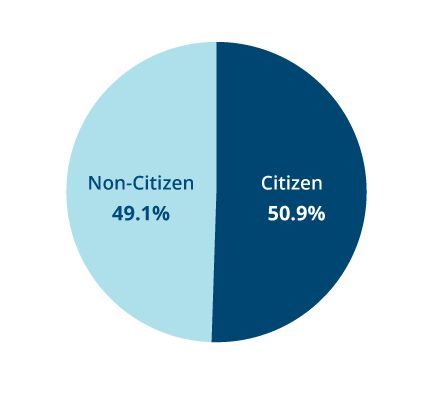
Source: U.S. Census 2020 American Community Survey 5-year Estimates
- Learn why levels of undocumented immigration have significantly declined.
- Learn how undocumented immigrants contribute to the U.S. tax base, including young people in the Deferred Action for Childhood Arrivals (“Dreamers”) program.
- Learn the demographic profile of undocumented immigrants, including trends in countries of origin, English proficiency, educational attainment and income levels.
- Learn how rates of undocumented immigration impact crime rates.
- Learn more about the economic benefits of creating pathways to citizenship for both documented and undocumented immigrants.
How do immigrants impact the United States workforce?
Immigrants have a higher workforce participation rate.*

Source: U.S. Census 2019 American Community Survey 5-year Estimates
- Learn how growing immigrant populations affect the economy.
- Learn how immigrants’ high rates of workforce participation impact their use of government benefits.
- Learn how high-skilled immigration impacts the U.S.-born workforce and strengthens businesses.
- Learn more about the growing and pivotal role that immigrants and their children will play in the U.S. economy.
- Learn how undocumented immigrants affect the U.S. economy.
- Learn how immigrants lower unemployment rates and increase workforce participation rates.
* The workforce participation rate is calculated by dividing the number of people working and those actively seeking work by the number of non-institutionalized, working-age (16-65) civilians.
Immigrants, particularly refugees, have higher self-employment rates.Immigrants, particularly refugees, have higher self-employment rates.
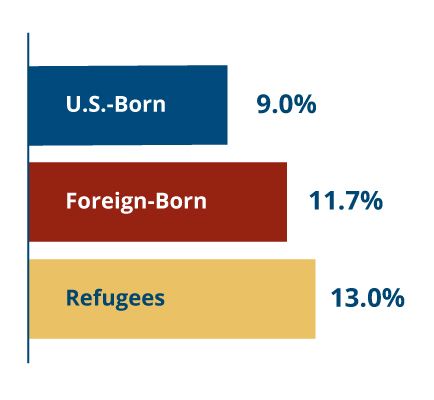
Source: Institute of Immigration Research analysis of the American Community Survey (ACS) 2012-2016 5-year sample data from Integrated Public Use Microdata Sample
One quarter (25%) of new U.S. businesses are founded by immigrants.

Source: Immigrant Entrepreneurship, National Bureau of Economic Research, July 2016
- Learn more about the accomplishments of immigrant business founders, including entrepreneurs like Andrew Carnegie, Elon Musk, and many more, in The ILC’s Immigrant Entrepreneur Hall of Fame.
- Learn more about how immigrant entrepreneurship improves and grows the economy.
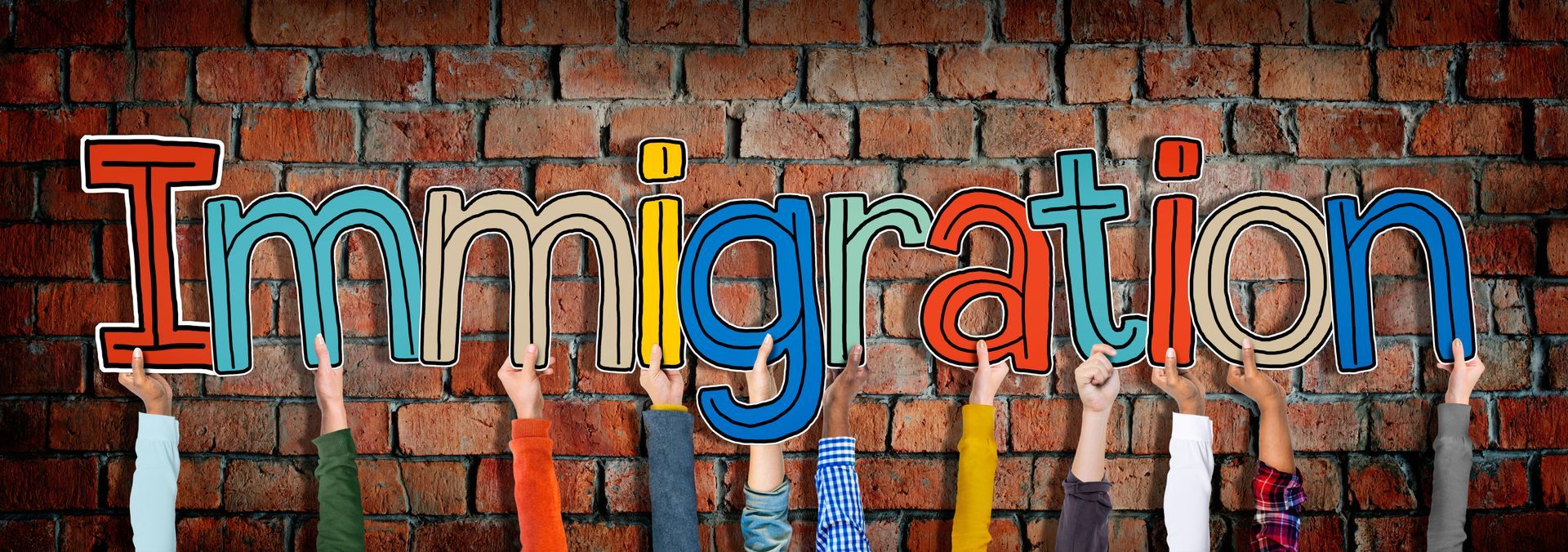
15 Myths About Immigration Debunked
“Immigrants will take American jobs, lower wages, and especially hurt the poor.”
FACT:
Immigrants don’t take American jobs, lower wages, or push the poor out of the labor market.
“It is easy to immigrate here legally. Why don’t illegal immigrants just get in line?”
FACT: It’s very difficult to immigrate legally to the United States. Immigration law is second only to the income tax code in legal complexity.
“Immigrants abuse the welfare state.”
FACT: Immigrants use significantly less welfare than native-born Americans.
“Immigrants increase the budget deficit and government debt.”
FACT: Immigrants in the United States have about a net zero effect on government budgets — they pay about as much in taxes as they consume in benefits.
“Immigrants increase economic inequality.”
FACT: Maybe. The evidence on how immigration affects economic inequality in the United States is mixed — some research finds relatively small effects, and some finds substantial ones. The standard of living is much more important than is the income distribution.
“Today’s immigrants don’t assimilate as immigrants from previous eras did.”
FACT: Immigrants to the United States — including Mexicans — are assimilating as well as or better than immigrant groups from Europe over a hundred years ago.
Immigrants are a major source of crime.”
FACT: Immigrants, including illegal immigrants, are less likely to be incarcerated in prisons, convicted of crimes, or arrested than native-born Americans.
“Immigrants pose a unique risk today because of terrorism.”
FACT:
The annual chance of being murdered in a terrorist attack committed by a foreign-born person on U.S. soil from 1975 through the end of 2017 was about 1 in 3.8 million per year.
“The United States has the most open immigration policy in the world.”
FACT:
The annual inflow of immigrants to the United States, as a percentage of our population, is below that of most other rich countries in the Organization for Economic Cooperation and Development.
FACT:
America’s current immigration laws violate every principal component of the Rule of Law. Enforcing laws that are inherently capricious and that are contrary to our traditions is inconsistent with a stable Rule of Law.
“Illegal immigration or expanding legal immigration will destroy American national sovereignty.”
FACT: Different immigration policies do not reduce the U.S. government’s ability to defend American sovereignty.
“Immigrants won’t vote for the Republican Party — look at what happened to California.”
FACT: Republican immigration policies pushed immigrants away, not the other way around.
FACT:
There is no evidence that immigrants weaken or undermine American economic, political, or cultural institutions.
“The brain drain of smart immigrants to the United States impoverishes other countries.”
FACT: The flow of skilled workers to rich nations increases the incomes of people in the destination country, enriches the immigrants, and helps (or at least does not hurt) those left behind.
“Immigrants will increase crowding, harm the environment, and [insert misanthropic statement here].”
FACT: People, including immigrants, are an economic and environmental blessing and not a curse.

